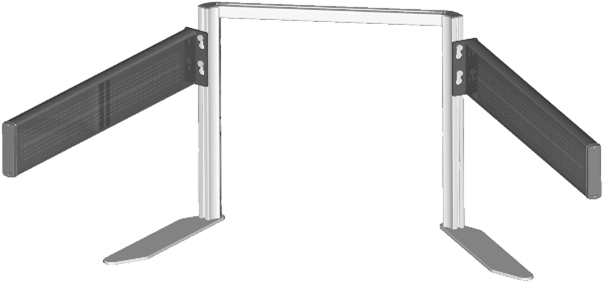
The Peripheral Perception Unit 2 (PP-HW2) is a specialized hardware equipment needed to execute the PP-R test in the VTS. It is only required for the PP-R test which measures perception and processing of peripheral visual information.
Scope of delivery
|
Pos. |
Qty. |
Description |
|
|---|---|---|---|
|
1 |
1 |
Left display element |
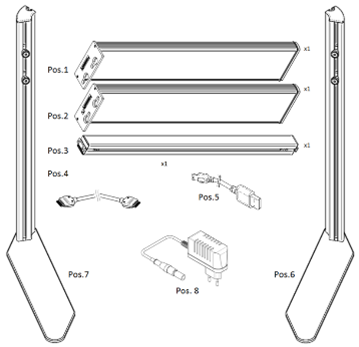
|
|
2 |
1 |
Right display element |
|
|
3 |
1 |
Crossbar |
|
|
4 |
1 |
Connecting cable 20pins/1m |
|
|
5 |
1 |
Connecting cable USB/3m |
|
|
6 |
1 |
Right pedestal |
|
|
7 |
1 |
Left pedestal |
|
|
8 |
1 |
Switching power supply 5V/4aA |
Mechanical assembly
|
Goal |
|
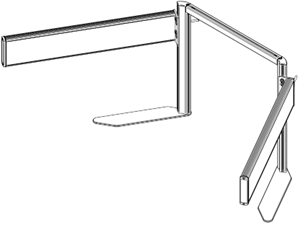
|
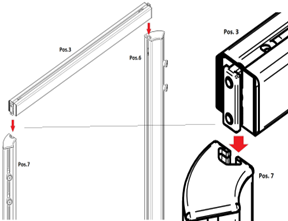
|
|
|
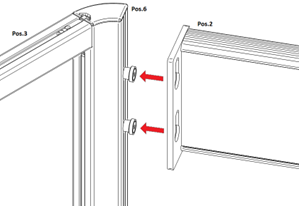
|
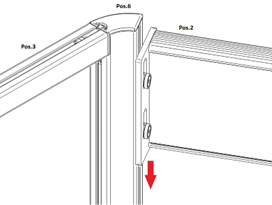
|
|
|
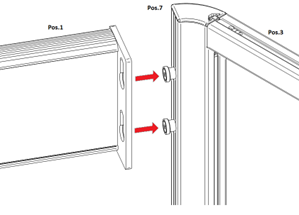
|
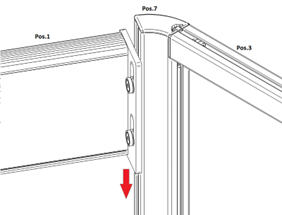
|
Cabling
|
|
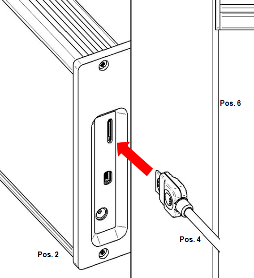
|
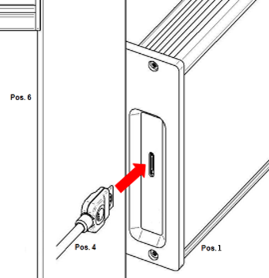
|
|
|

|
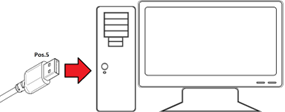
|
The device may only be used with the parts included in the scope of delivery!
Only the enclosed switching power supply from CINCON ELECTRONICS CO., Ltd. with the type designation TR30RAM050 may be used!
Before using the device, the cables must be connected. First connect the two display elements (Pos.1 and Pos.2) with the connecting cable provided (Pos.4). The jack on either end of the connecting cable can be plugged into either the left or right display element. See steps 1 and 2. Then connect the USB cable (Pos.5) to the right display element (Pos.2) and the computer (steps 3 and 4).
Power is supplied via the power adapter provided (Pos.8), which is also connected to the right display element (Pos.2) (see step 3). The power adapter (Pos.8) must also be plugged into a mains socket.
To disassemble the device, follow the cabling instructions in reverse order.
Place the test taker’s monitor between the Peripheral Perception display elements so that the front of the monitor aligns evenly with the frame holding the display elements.
Specifications
|
Specifications |
Value |
|
|---|---|---|
|
Operating voltage |
5V / 4A |
|
|
Power |
20W |
|
|
Protection class |
I |
|
|
Device type |
B |
|
|
Max. dimensions (WxHxD) |
1450 x 560 x 800 mm |
|
|
Weight (without accessories) |
9,6kg |
|
|
Storage temperature |
-20 to 60°C |
|
|
Operating temperature |
10 to 30°C |
|
|
Relative humidity |
Max. 70%, non-condensing |
|
|
Switching power supply |
Manufacturer: |
CINCON Electronics Co., LTD. |
|
Model: |
TR30RAM050 |
|
|
Output: |
5V DC 4.0A |
|
Requirements for the test setting
The test setting should allow the test taker to complete the test without disturbances, including those caused by visual and auditory stimuli.
The ambient brightness must not exceed 2500 lux, as otherwise the contrast between the stimuli presented and the ambient brightness will be too low. At levels higher than this there will be insufficient contrast with the stimuli presented in the test. If the ambient brightness is greater than 2500 lux, it should be reduced.
The ambient brightness is measured by a special brightness sensor in the PP-R hardware. If it is too high, the system prevents the test being administered.
The test taker’s position
The test taker should sit as described under Ergonomic requirements for the workstation. It is important that the test taker's head is positioned between the two display elements. The head should align with the white markings in the middle of the sensor bars. This allows the device to determine the position of the head.
The distance between the metal frame and the face must be between 20 and 45 cm. This distance is measured by the PP-R hardware. If this condition is not met, feedback is provided by the Vienna Test System.
The lateral distance between the head and the center of the screen should be no more than 10 cm. This distance is also measured by the PP-R hardware. If this condition is not met, feedback is provided by the Vienna Test System.
The correct (and incorrect) sitting position is shown schematically in the figure below. To better adjust the vertical position of the display elements, there are two positions where they can be mounted. For taller people, use the upper mounting option; for shorter people (or children), the lower option is preferable.
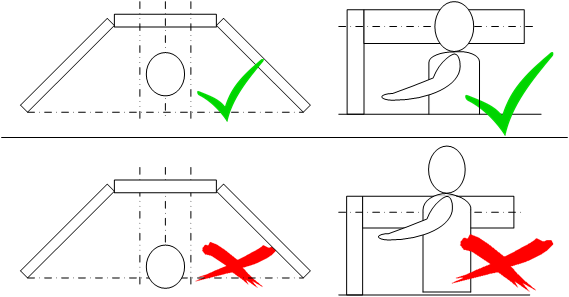
Safety note
To avoid the risk of electric shock, this device must only be connected to a power supply with a protective conductor.